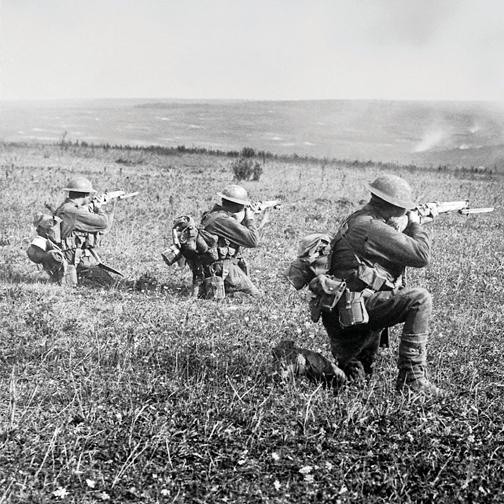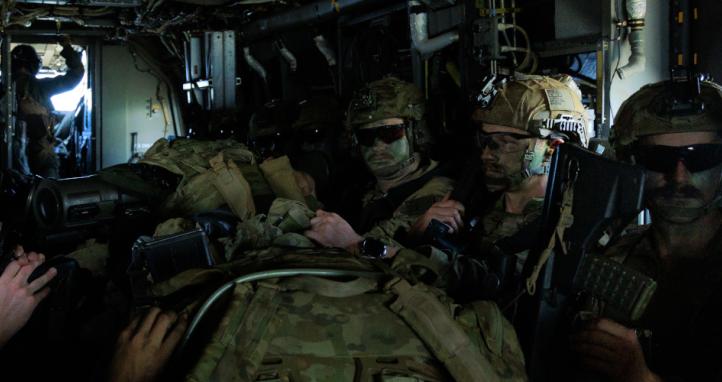As much as we hear about lucrative reserve dollars, reality just doesn’t stack up. One reserve day is not equivalent to one day of permanent force (Service Category [SERCAT] 6/7) salary. It’s not even close.
This is a problem best illustrated numerically. For our example, let’s take an average sergeant who will be on pay group 4, increment 1.
The permanent force sergeant:
- Earns $94,641 p.a. before tax, $73,416 after tax.
- Works on average 5 days a week, 48 weeks per year, or 240 days in total.[i]
- Receives $394.34 per day before tax, $305.90 per day after tax.
By contrast, the calculation for the daily salary of reservists assumes that they work 365 days each year.[ii] But we don’t expect permanent force members to be at work every day and provide additional remuneration if they are.[iii] Even if reservists volunteered, we wouldn’t pay them to be ‘on call’ every single weekend and public holiday.
The reserve sergeant:
- Earns $259.29 per day, non-taxable ($62,229.6 p.a.)
That is a difference of just under 20%, after tax. The savvy reader might point out that tax-exempt pay still can be more lucrative if you already have a separate taxable income. But this is only true for those in the second highest tax bracket, making more than $120,000 p.a. That’s nearly $30,000 more than the average Australian full-time wage.[iv]
Thus, this pay adjustment is only worthwhile for high-income reservists. Yet for these members, their civilian salaries are already much higher, and Defence often can’t compete on financial grounds to extract part-time employment characteristics from them. The ADF’s part-time workforce will instead be those closer to the average Australian income, sometimes working fewer hours or studying in their civilian lives.
For those making any less than $120,000 it would be far more lucrative to receive the same $394.34 per day and pay tax on it. Indeed, this is precisely why Defence pays SERCAT 6 members on a pro-rata basis. Part-time service is just not financially viable otherwise.
Moreover, none of these calculations include the value of superannuation, healthcare or rent allowance. Superannuation for a sergeant is worth $13,837.5 per annum.[v] Healthcare is worth $1,165.[vi] In Sydney, rent allowance is worth $26,449.80.[vii] In total, an extra $41,452.30 p.a. or $172.72 per day, after tax.
Overall, it is an equivalent daily salary of $478.62, after tax, compared to the reserve sergeant’s $259.29. That’s an additional 85%! This is particularly bizarre, given many of these reservists are ex-permanent members. The day after transferring to Reserves, these members are told by Defence that their labour is now worth barely half as much.
To be fair, there is a substantial benefit to Defence inherent in the conditions of permanent force service. Being able to deploy members and require them to relocate at whim is a necessity for Defence planning, although it is worth noting that (medically) non-deployable members still receive these benefits.
To incentivise the permanent force, perhaps it is justifiable to provide superannuation, rent allowance, healthcare, and other incentives only to them.[viii] Defence needs to offer some benefits to recruit a larger permanent workforce. Yet 85% lower pay for reservists is a huge margin. Even without these incentives, base pay is still 20% lower after tax.
Ultimately, the extra value of permanent force service is a matter for senior Defence policy makers. But Defence should not feign confusion at thousands of vacant reserve positions, nor at their inability to encourage existing members to work more often in a part-time manner.
When you pay people half the wage, you get fewer applicants and reduced hours offered. The value of labour is decided by the equilibrium of all market participants, not just the employer, and reservists are demonstrating that the salary on offer isn’t worth losing much more than a Tuesday night.
Let’s finish with a human perspective. Sergeant Barnes is currently studying full-time at university after leaving the permanent force. Although he’d prefer to continue working for the Army he now works at a café, because even 2.5 reserve days per week wouldn’t be enough to support his family ($648). It certainly isn’t enough for any of his friends who left as Lance Corporals on a much lower salary.
Even without providing him rent allowance, healthcare, or superannuation; by making his pay pro-rata on an hour/week basis his income would increase by $338 each week ($986). The progressive tax system is designed to allow people to earn a living wage before higher taxation is imposed. Suddenly a part-time role in Defence provides a sustainable salary and he can serve again. There are thousands of people in Sergeant Barnes’ position and thousands more looking to reduce the number of days that they work. All could be future employees.
You often hear that reserve funding is in surplus. The Government has recently promised funding for more than 10,000 new uniformed positions. The money is there. SERCAT 6 already provides the salary infrastructure to implement it.
If Defence really wants the part-time workforce it claims to be pivoting towards, it’s time to get serious, and pro-rata pay.










Example: when posted to Kapooka, we recorded that the average work week for a Lieutenant, was 84 hours (across the entire year). Lieutenants at 1 RTB are the lowest paid rank as they do not receive RISDA. The average LT posted there receives $90,051 each year before tax.
Calculated hourly, a Lieutenant receives $20.80/h ($1 below minimum wage).
So it’s quite interesting to see that LTs could be paid more, and have more flexibility with their lives, if they worked at McDonalds.
But most people won’t do that, because there is pride in our service of the nation. Really the only thing missing from this article is discussing the pride in service, in that we don’t serve for the money.
* 1984 the Armed Forces Federation of Australia put forth that the divisor for Reserve remuneration should be adjusted to 1/220
* 1990 - The Armed Force Federation of Australia sought an adjustment to the Reserve pay divisor from 1/365 to 1/219
* 1995 - The Glenn review recommended the Divisor be 1/261
* 2008 - The ANAO report states “within Defence, it is generally accepted that ARA members will be available 225 days per year" and thus the divisor was inequitable.
* SERCAT 6 have a 1.4 multiplier on daily rate to accommodate for weekends not worked.
* In his Cove paper "Tax-free undermines the TWS", LTCOL Ian McNab indicates that the DFRT acknowledges there are 230 workdays for FT members.
What if sercat 5 remuneration was indexed against the number of reserve days served?
The first 0-20 days (technically minimum effective service) are paid at 100% loading.
The next 21-50 days are paid at 110% loading (my experience indicates 50 days is closer to actual effective service)
50-100 days are paid at 120% loading
101+ days are paid at 125% loading.
This adds incentive to increased service. The pay bracket could also “hangover” to the next year, so that consistently “effective” members are rewarded.
I will leave the term “effective” reserve service alone as it deserves an entire article.
Thank you for the great work in examining this issue and providing an informative and succinct analysis. which clearly demonstrates the significant pay differential. This is one reason why so few SERCAT 7 members transfer to Reserve service which underpins the failure of the much hyped Total Work Force System.